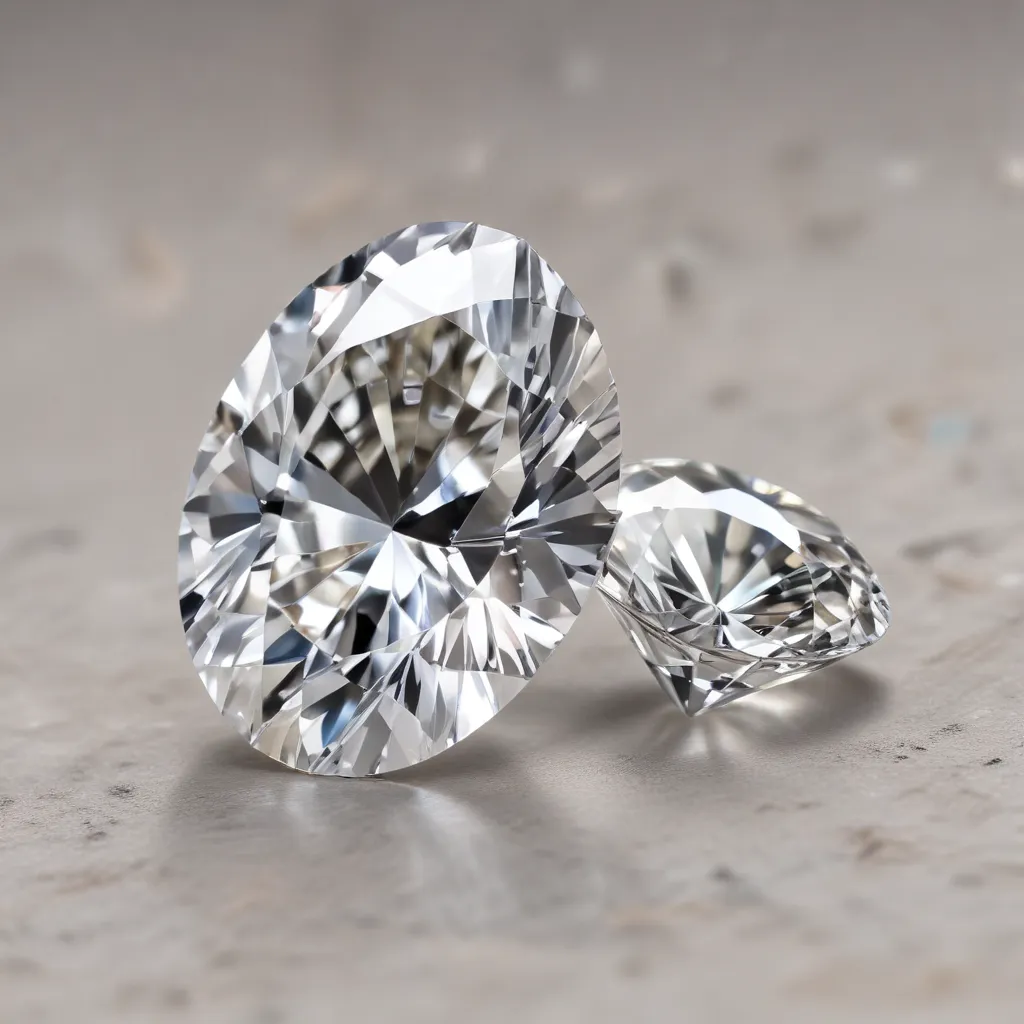
In the world of gemstones, the debate between moissanite and diamond has long been a topic of fascination for jewelry enthusiasts and prospective buyers alike. These two sparkling wonders possess distinct optical properties and performance characteristics, each offering unique advantages that cater to various preferences and budgets. As a gem and jewelry expert writing for Shelby Gem Factory, I’ll delve into the intricate details that differentiate moissanite and diamond, exploring their scientific composition, visual appeal, and practical considerations.
Optical Properties of Moissanite and Diamonds
At the core of the moissanite-diamond discussion lies their fundamental optical properties, which directly impact the way they interact with light and the resulting visual effects.
Refractive Index
The refractive index is a crucial factor that determines a gemstone’s ability to bend and refract light. Diamonds have a relatively high refractive index of 2.42, which is responsible for their renowned brilliance and fire. Moissanite, on the other hand, boasts an even higher refractive index ranging from 2.65 to 2.69, giving it a more pronounced optical performance.
Dispersion
Closely related to refractive index is dispersion, the gemstone’s ability to split white light into its component colors. Diamonds exhibit a dispersion of 0.044, leading to the characteristic “rainbow-like” flashes of color, known as fire. Moissanite’s higher dispersion of 0.104 results in an even more dramatic display of fire, often described as a more intense, “fiery” appearance.
Brilliance and Fire
The combination of refractive index and dispersion ultimately determines the overall brilliance and fire of a gemstone. Moissanite’s exceptional optical properties allow it to outshine diamonds in terms of these visual qualities, with a dazzling sparkle and vibrant flashes of color that captivate the eye.
Performance Characteristics of Moissanite and Diamonds
Beyond the optical realm, the performance characteristics of moissanite and diamonds, including their durability, longevity, and environmental impact, are equally important considerations for prospective buyers.
Durability and Hardness
Moissanite ranks an impressive 9.25 on the Mohs scale of hardness, second only to diamonds, which score a perfect 10. This exceptional hardness makes moissanite highly resistant to scratches and abrasions, making it a durable choice for everyday wear. Diamond Nexus stones, while also designed to be durable, typically rank slightly lower on the Mohs scale compared to moissanite.
Longevity and Maintenance
In addition to their scratch resistance, moissanite and Diamond Nexus stones require minimal maintenance to maintain their luster over time. Moissanite’s double-refractive nature allows it to retain its brilliance even when slightly dirty, while Diamond Nexus stones are often coated to enhance their diamond-like appearance. Both can be easily cleaned with mild soap and warm water, though moissanite may require less frequent cleaning.
Ethical and Environmental Considerations
As consumers become increasingly conscious of the environmental and social impact of their purchases, the sourcing and production of gemstones have become a significant factor in decision-making. Moissanite, being a lab-grown material, is often considered a more ethical and eco-friendly alternative to mined diamonds, as it eliminates the need for harmful mining practices. Similarly, Diamond Nexus stones are also lab-created, providing a conflict-free and environmentally-conscious option.
Composition and Formation of Moissanite and Diamonds
To fully understand the differences between moissanite and diamonds, it’s essential to delve into their fundamental composition and the processes that lead to their formation.
Molecular Structure
Diamonds are composed of pure carbon crystals, while moissanite is a silicon carbide compound. This distinction in molecular structure contributes to their unique optical and physical properties, with moissanite’s double-refractive nature and higher refractive index setting it apart from the more traditional diamond.
Geological Origins
Natural diamonds are formed deep within the Earth’s mantle, under immense pressure and temperature conditions. Moissanite, on the other hand, was first discovered in a meteor crater by the French scientist Henri Moissan in 1893, indicating its extraterrestrial origins. Today, both natural and lab-grown versions of these gemstones are available on the market.
Synthetic Production
While natural diamonds are mined from the earth, both moissanite and Diamond Nexus stones are predominantly laboratory-grown. This synthetic production allows for greater control over the quality, consistency, and environmental impact of the gemstones, making them a viable alternative to their mined counterparts.
Aesthetic Comparison of Moissanite and Diamonds
When it comes to the visual appeal of moissanite and diamonds, their similarities and differences can often be subtle, yet significant.
Visual Appearance
To the untrained eye, moissanite and diamonds can appear strikingly similar, with both offering a dazzling, colorless brilliance. However, upon closer inspection, the differences in their optical properties become more apparent, with moissanite often exhibiting a more pronounced, “fiery” appearance compared to the more traditional sparkle of diamonds.
Cut and Symmetry
The cut and symmetry of a gemstone play a crucial role in its overall beauty and performance. Both moissanite and diamonds are available in a wide range of traditional cuts, such as round, princess, and pear, allowing for a diverse range of design options. The precision of the cut, however, can influence the stone’s ability to reflect and refract light, potentially giving one a slight edge over the other in terms of visual appeal.
Color and Clarity
Diamonds are typically graded on their color and clarity, with the most valuable stones being those that are colorless and free of visible inclusions. Moissanite, on the other hand, can range from colorless to slight hues, which are often undetectable to the naked eye. While both offer a high-quality appearance, the subtle differences in color and clarity may appeal to different personal preferences.
As you explore the world of gemstones, the choice between moissanite and diamonds ultimately comes down to your individual priorities, whether it’s the dazzling brilliance, the ethical and environmental considerations, or the overall value proposition. By understanding the unique optical properties and performance characteristics of these two captivating gemstones, you can make an informed decision that aligns with your personal style and budget. Shelby Gem Factory is here to guide you through this journey, helping you find the perfect gemstone that will truly sparkle and shine.

